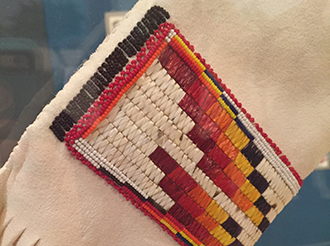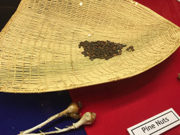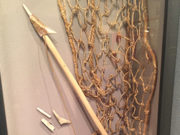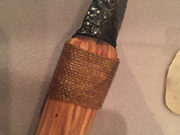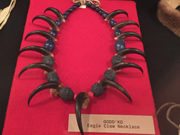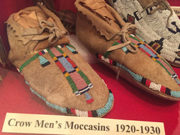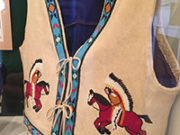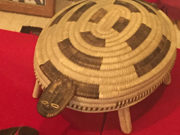On a recent trip to Idaho, I had the pleasure of stopping in at the Shoshone-Bannock Tribal Museum. After I paid my $3.50 admission fee and signed the guestbook, I set off exploring.
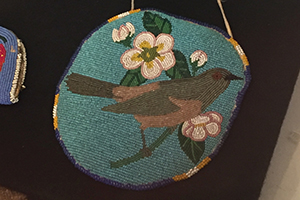
The Shoshone and Bannock tribes both originate from the Uto-Aztecan sub-family of language known as Numic and were hunters and gatherers who traveled the Great Basin of present day Idaho, Wyoming, Nevada, Utah, Montana, Oregon, Washington, California and even Canada and Mexico.
At the museum, I saw the digging sticks the tribes’ gatherers used to harvest the desirable camas roots and learned how they cultivated and carried pine nuts and other edible staples. Plants were also harvested for medicinal uses.
The museum’s fish hooks, fishing spears, and knives document the tribes’ history as skilled hunters and fishermen. The tribes needed to know where and when to hunt and gather — ensuring they had sufficient provisions to survive through winter meant the difference between life and death.
Moving camp was an enormous undertaking spearheaded by the women and requiring involvement by all members.
Also on display in the museum is a saddle made from deer antler used by the Salmon River people (or Lemhi Shoshone) to transport themselves and their collected food. Horses were introduced to the Shoshone-Bannock in the early 1700s and had a profound impact on their lives, which was reflected in the fact that horses were a recurring theme in the museum’s collection.
The tribes’ contact with whites began in 1805 when Lewis and Clark, accompanied by Sacajawea (Lemhi Shoshone), entered the Salmon River area. The contact became increasingly disruptive to the Shoshone and Bannock subsistence lifestyle and eventually culminated in the creation of the Fort Hall Reservation in June 1867 and the tribes’ forced relocation thereto.
For 67 years, an Indian boarding school was also run on the reservation, further severing the ties the Shoshones and Bannocks had with their hunter-gatherer culture.
Exquisitely-beaded jewelry, vests, pouches, moccasins and bags adorned virtually every display case in the museum as a testament to the Shoshone-Bannock people’s past and present expertise at beading.
I even met Boris, the (now taxidermic) bison who helped the Shoshone-Bannock start their herd of bison in 1966 that now number around 350 and freely graze in over 4,000 acres of pasture on the reservation.
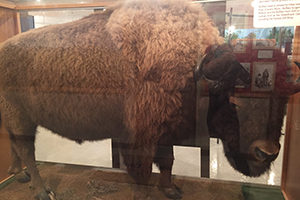
Maybe next time I visit the area I can stop in for a bison burger at the Camas Sports Grill at the Shoshone-Bannock Hotel.


